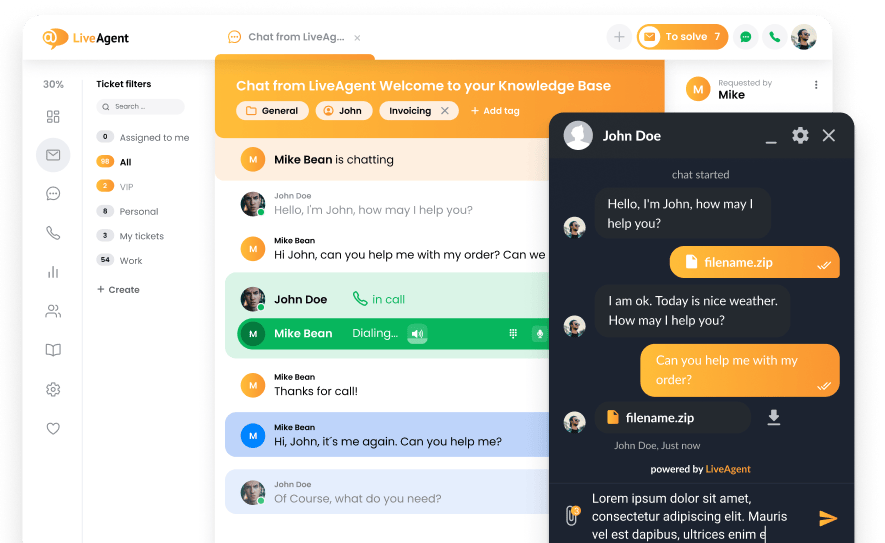What is a service level agreement?
A service level agreement (SLA) is a contract between a service provider and customer that defines what level of service has to be provided to the customer at all times. SLAs typically cover quality of service, availability of service, and provider responsibilities.
In customer support, a service level agreement typically defines how fast a provider has to answer a customer’s service request.
Beispiel
Service level agreements can cover/define tons of internal goals and metrics that need to be met. One example of a team goal could be a response time commitment. For example, a service level agreement could state that the software provider’s service desk has to answer the customer’s queries from email, live chat, and the phone within 1 business hour.
If this goal is not met, the customer has the right for reimbursement.

What happens if the SLA is not met?
Typically, SLAs include predefined penalties that can be enforced if the service provider doesn’t meet the terms of service. These penalties are often handled via credits that are equal to a certain percentage of the vendor’s monthly profit made from the customer’s account. If the real goal is not met, the customer has the right to reimbursement in the form of a credit which can be applied to future monthly subscription charges.
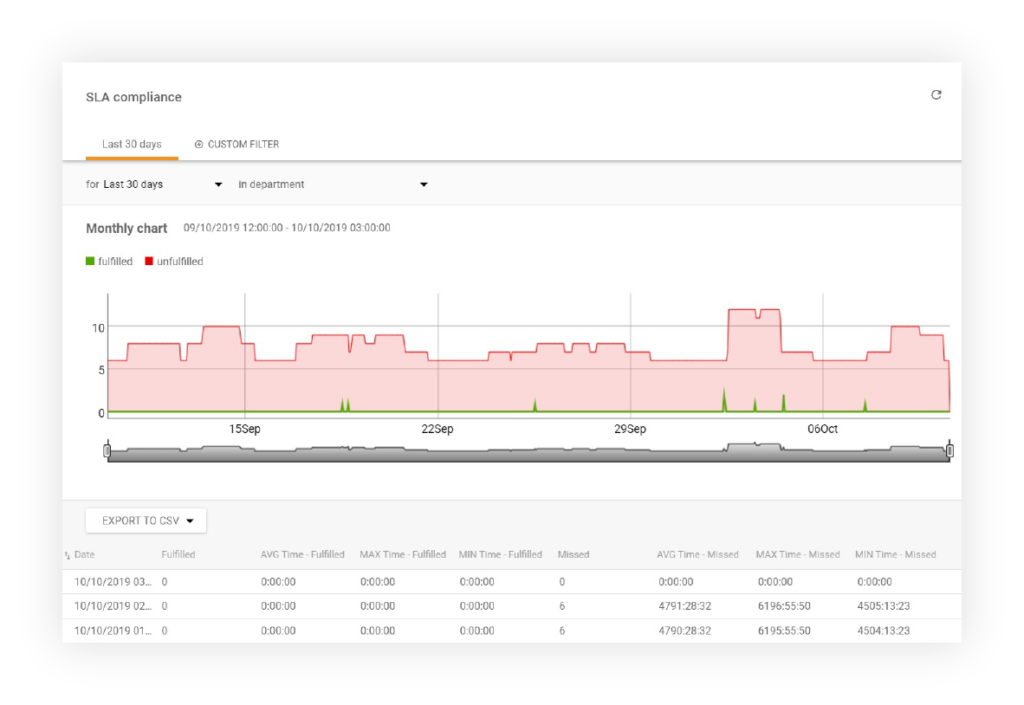
Why are SLAs important and why should I use one?
SLAs are important because they define clear customer expectations and provider responsibilities. If they are not met, each party knows the consequences. This ensures that if problems arise, no party pleads ignorance and tries to excuse their behavior.
SLAs are also beneficial to use because they hold your employees accountable and keep efficiency and productivity high. If there are no agreements or performance goals in place, employees can get “lazy” and assume a mindset that everything will get done eventually. This can create a build-up of support tickets, fuel customer frustration, and hurt your business. If your customers are unsatisfied with the service you provide, it’s likely that they’ll churn and take their business elsewhere.
Thus, if you want to provide excellent service and uphold business goals and solution times, you should look into adding a service management software into your arsenal of tools.
Manage SLAs with ease
Stay on top of all messages from your VIP clients with SLA rules, levels, and our “To-Solve” feature. Try it today. No credit card required.
How do SLAs work in LiveAgent?
It depends on the types of SLA rules and levels you create. For example, if you create an SLA level that has the “First Answer” due in one hour, then the tickets that are tied to this SLA level must be answered within one hour during specified business hours. If they’re not answered within one hour, they will be marked as overdue, and the SLA will be unfulfilled.
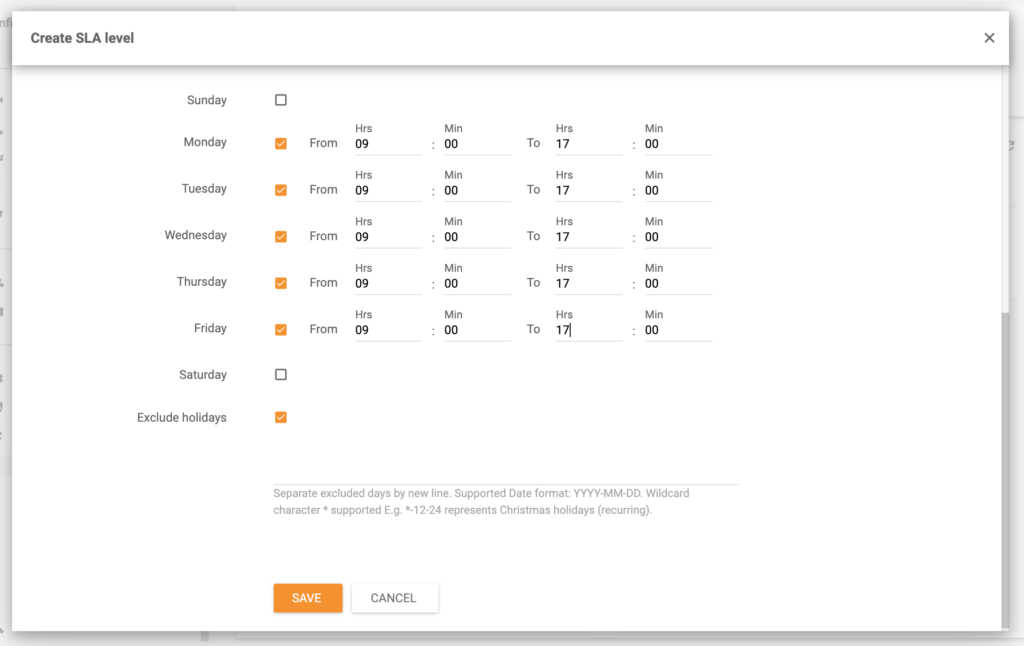
What are SLA levels?
SLA levels define the SLA response times that your support agents need to meet. Please note that when you’re creating your SLA levels in the LiveAgent help desk software, you can define your business hours to exclude holidays or weekends.
SLA level answer types:
- First answer (for new tickets)
- Second answer (for second and all following answers)
- Chat answer
- Call answer
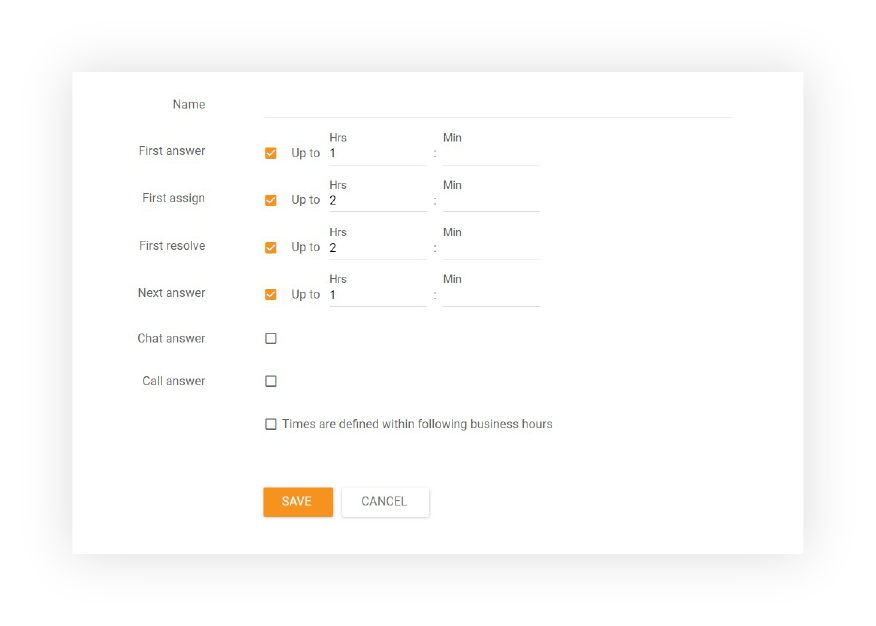
What are SLA rules?
SLA rules are automation rules that are executed when certain conditions are met. These rules can streamline agent workflow and override other existing rules if needed.
Liste der Bedinungen für SLA Regeln:
- Ticket source
- Ticket status
- Ticket created (date)
- Ticket changed (date)
- Ticket deleted
- Ticket start referrer URL
- Ticket priority
- Last message
- Assigned agent status
- Custom fields
- Ticket department
- Ticket assigned to
- Customer Group
- Created from invitation
- Ticket tags
List of SLA rule actions:
- Change SLA Level
- Stop other rules
SLA rules can also be combined with automation rules to escalate tickets that are not marked as new.
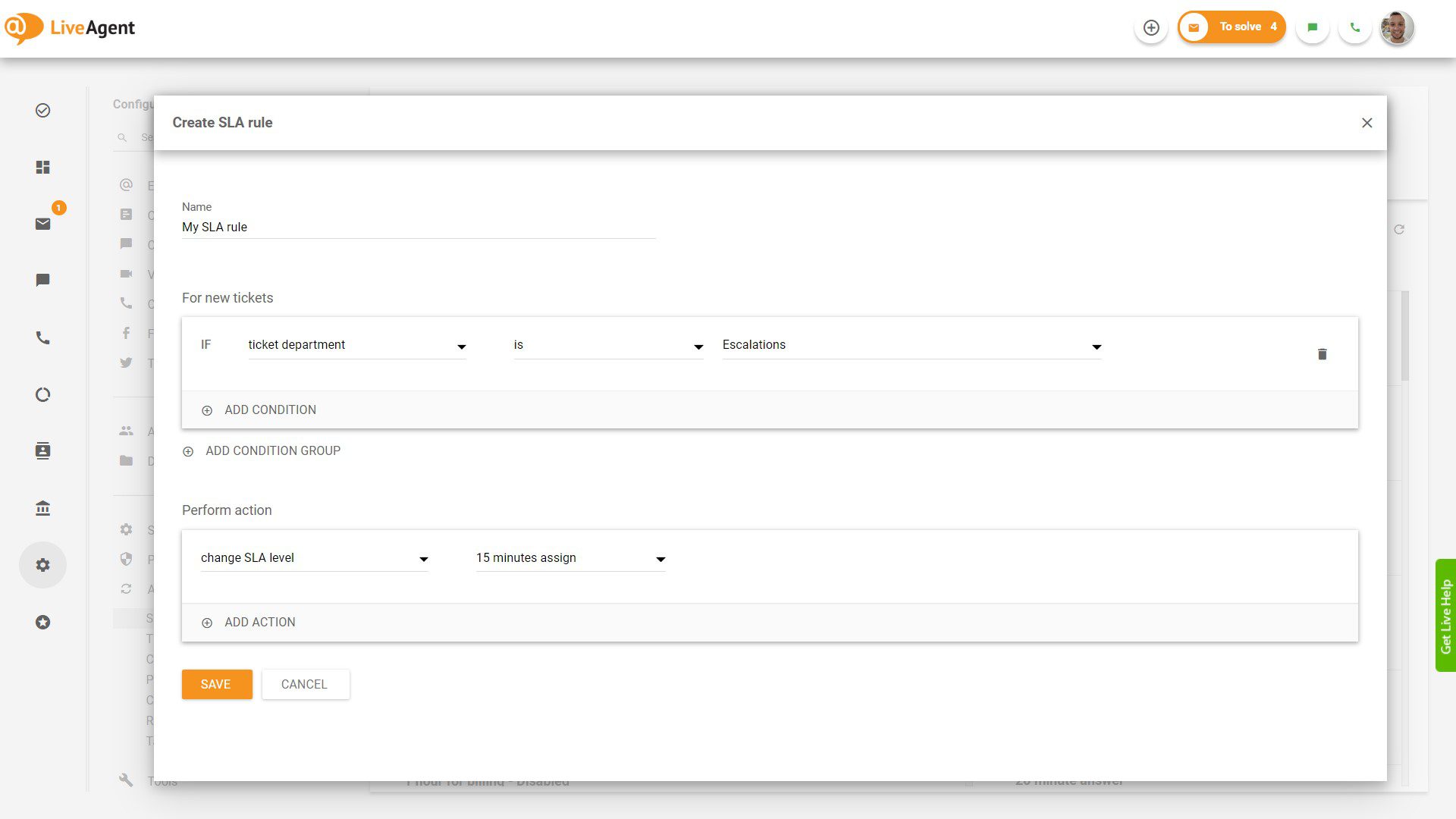
How to set up service level management in LiveAgent
- Log into LiveAgent.
- Click on Configuration (cogwheel icon in the navigation bar).
- Click on Automation.
- Click on SLA.
- Click on the orange Create Level button.
- Give the level a unique name such as Urgent SLA.
- Check the First Answer checkbox and set it to 1 hour.
- Check the Next Answer checkbox and set it to 30 minutes.
- Click Save and close the window.
- Click on the orange Create Rule button.
- Check the Status Active checkbox.
- Give the rule a unique name such as Assign tag URGENT.
- Click on Add Condition group and set it to IF ticket tags contain URGENT.
- Set the perform action as change SLA level and set it to Urgent SLA.
- Click on Save and close the window.
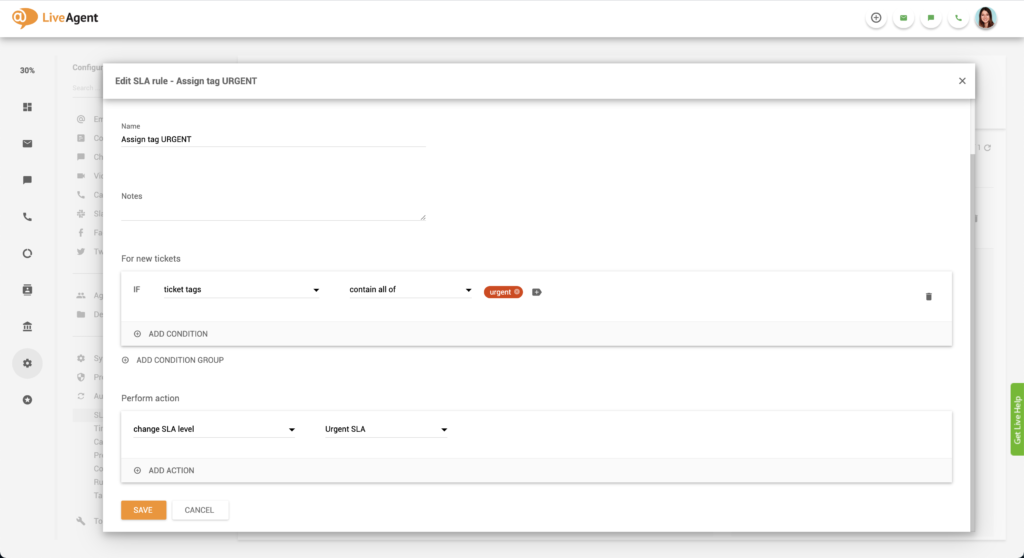
SLA compliance reports
If you want to take a closer look at your support department’s performance, LiveAgent gives you to option to generate SLA compliance reports. These reports showcase all fulfilled and missed SLAs across departments and specific time frames. Individual entries can be sorted by department, agent, and date.
In LiveAgent’s customer ticketing software, you can find all SLA compliance reports and export them into CSV files. This makes it easier to share the information with higher management.
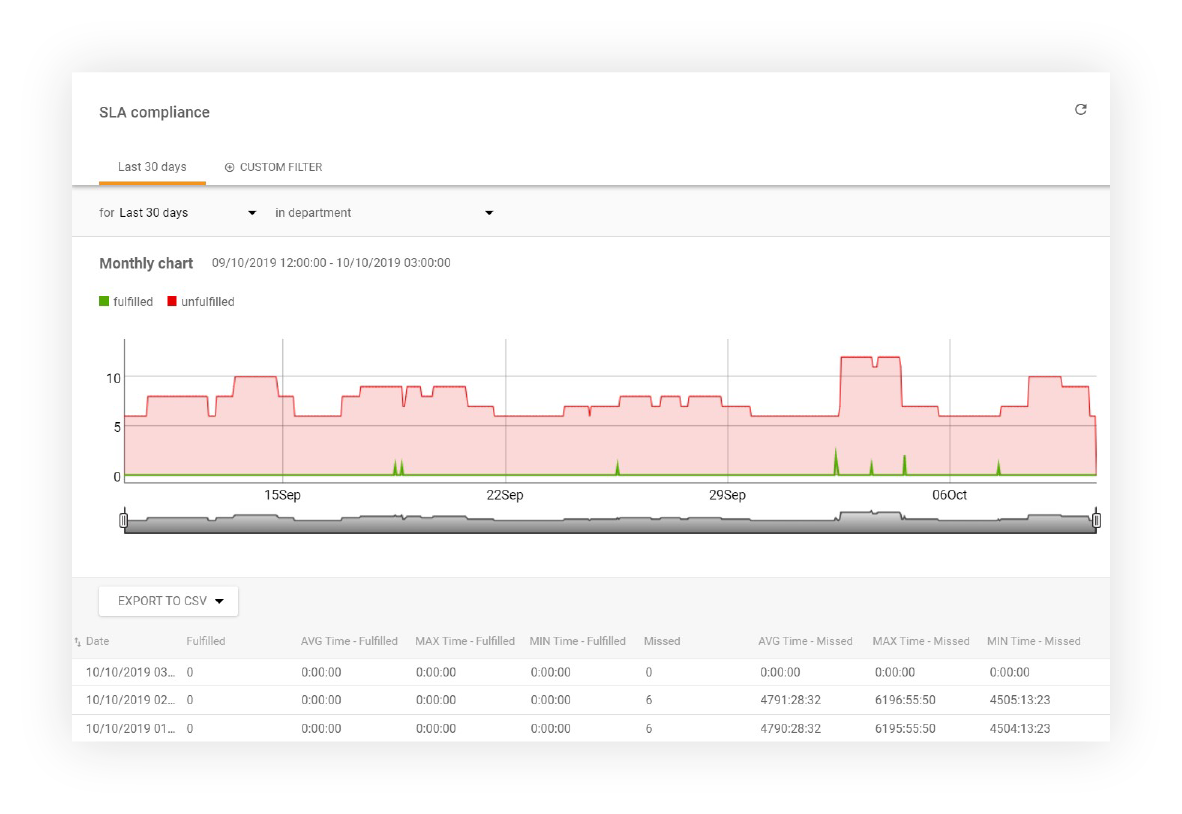
Anzeigeoptionen (Spalten) für SLA-Protokollberichte:
- Date
- Fulfilled
- Avg. time – Fulfilled
- Max. time – Fulfilled
- Min. time- Fulfilled
- Missed
- Avg. time – Missed
- Max. time – Missed
- Min. time – Missed
SLA Compliance Bericht
Use this LiveAgent REST API guide for call values from SLA compliance reports.
SLA log reports
Apart from SLA compliance reports, LiveAgent also keeps logs of all fulfilled and missed SLAs. The logs can be filtered by departments and by a specific time range. Individual entries can be sorted by the requester, ticket ID, SLA start time, department, agent, due date, close date, and SLA remaining/overdue time. All SLA logs can be exported into a CSV file as well.
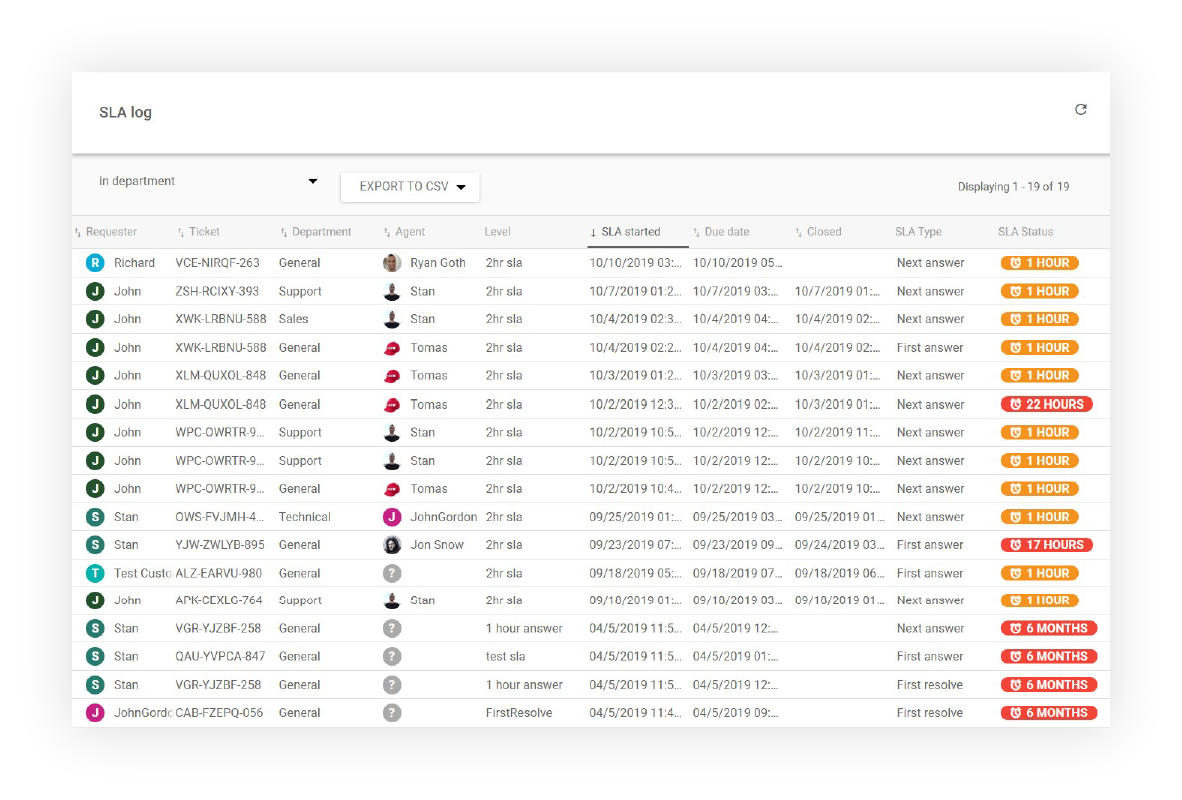
SLA log report display options (columns):
- Requester
- Ticket
- Department
- Agent
- Level
- SLA started
- Due date
- Closed
Want to use SLA log reports with API?
Use this LiveAgent REST API guide to call values from the SLA log report.
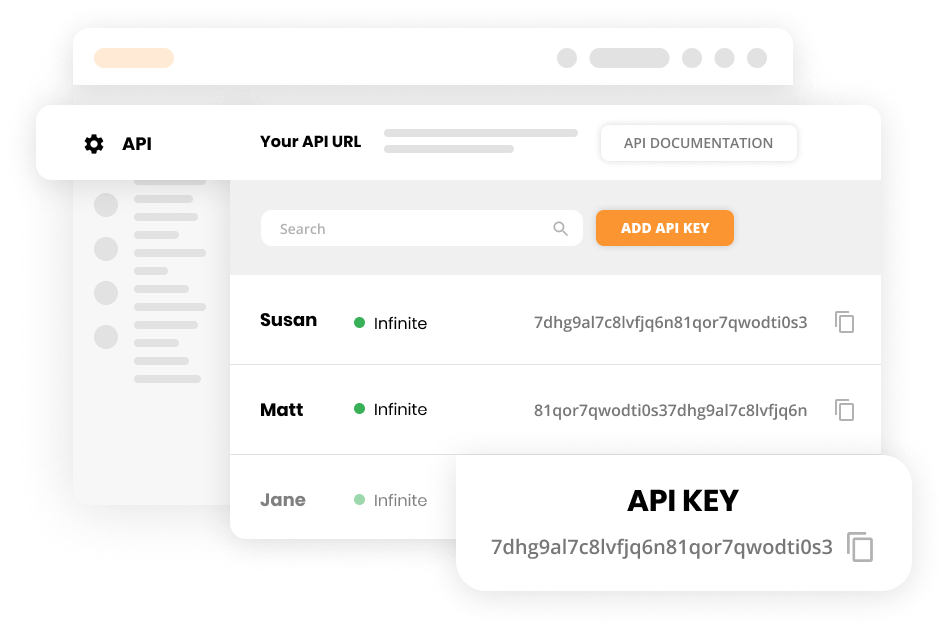
Knowledge base resources
- Service-level-agreements (explanation, use cases, set up guide)
- How to set up SLA in LiveAgent
- Glossary: SLA
- Glossary: SLA violation
- Webinar: Email, Automation, SLA

Want to manage SLAs with ease?
Stay on top of all messages from your VIP clients with SLA rules, levels, and our “To-Solve” feature. Try it today. No credit card required. Start a free 30-day trial.
Ready to take control of your customer service standards?
LiveAgent's SLA feature allows you to set response and resolution times, ensuring timely support for your valuable customers.

 Български
Български  Čeština
Čeština  Dansk
Dansk  Eesti
Eesti  Español
Español  Français
Français  Ελληνικα
Ελληνικα  Hrvatski
Hrvatski  Italiano
Italiano  Latviešu
Latviešu  Lietuviškai
Lietuviškai  Magyar
Magyar  Nederlands
Nederlands  Norsk bokmål
Norsk bokmål  Polski
Polski  Română
Română  Русский
Русский  Slovenčina
Slovenčina  Slovenščina
Slovenščina  简体中文
简体中文  Tagalog
Tagalog  Tiếng Việt
Tiếng Việt  العربية
العربية  English
English  Português
Português 




